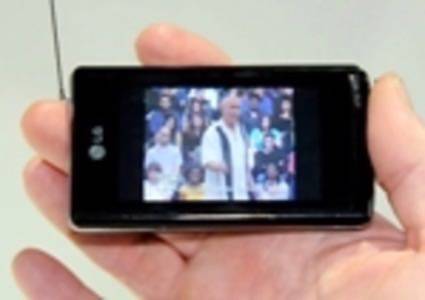According to a new report from Nielsen Mobile, only 5% of all U.S. cell phone owners subscribe to a mobile TV service. Yet that number is the highest out of of all the other worldwide markets tracked by the company. Only France and Italy came close, each at 4 percent. According to Nielsen, mobile video use isn’t more prevalent due to lack of differentiating capabilities, high cost, and lack of compelling content. In fact, we are now even seeing mobile video’s plateau – a point where you would normally expect to see adoption slow considerably.

Mobile TV Today
In the U.S., 10.3 million mobile phone subscribers watch video content on their mobile phones each month. These clips from mobile web sites, subscriptions delivered by the carrier, or through mobile “live” TV programming. But the mobile video subscription market has barely grown during the past year. In Q3 2007 it was at 6.4 percent and by Q3 2008 it was only 7.3 percent. And only 26% of subscribers who paid for mobile video services during the third quarter of 2008 used them at least once a month.
Taken at face value, these numbers look bad for mobile TV’s future, but don’t count it out just yet. New developments in the mobile video marketplace have the potential to reinvigorate the industry and allow it to grow once again. Says Nielsen, the expanded use of mobile web and mobile web video, an improved advertising subsidy to subscription-based streaming mobile video services, and the rollout of mobile digital television (mobile DTV) could combine to be mutually beneficial for carriers, device manufacturers, content providers, advertisers and consumers.
Free Mobile TV is Coming! (We hope)
Most notably, a groundbreaking new service made its debut at this year’s CES. The Open Mobile Video Coalition (OMVC), announced that a new mobile DTV service will soon arrive in 22 U.S. cities, covering 35% of U.S. television households. The mobile service aims to provide live, local and national over-the-air digital television to mobile devices.

Included in the service are 63 stations from the 25 major broadcasters that are on board. Those include NBC Television, Gannett Broadcasting, Sinclair Broadcast Group, Fox Television, Belo Corp., Grey Television, Scripps Television, Hearst Argyle Television, ION Media Networks and Lin Television.
This mobile TV service may succeed where others have failed because it bypasses the carriers altogether. Instead, the service uses an ATSC broadcasting system to beam signals directly from the station to the mobile devices themselves. This unburdens the carriers from having to support the data transmissions – they just have to sell the phones.
What Needs to Happen
Of course, in order for this new technology to work, you have to have devices capable of receiving the signal. LG Electronics is prepared for that – they showed off prototype phones at CES along with DTV-enabled laptops, portable navigators, and in-car DTVs. Some laptops were shown with a USB dongle that included a long antenna which could bring DTV to anyone’s computer.
Although mobile DTV holds great appeal (as evidenced by the enthralled crowd of spectators around LG’s booth), in order to move forward, device manufacturers like LG and Samsung will have to remain committed to bringing these prototypes to market. Nielsen also notes that one forward-looking carrier needs to step up to the plate and deliver a handset that offers free DTV in order to generate interest in the service and grow the market. That certainly needs to occur before attempting to sell premium levels of content to consumers.
This would be a good path for the carriers losing customers to take as a way to differentiate themselves from the others. As more customers migrate to AT&T for the iPhone or to Verizon for the Blackberry Bold, for example, the losing carriers could introduce free mobile DTV services in an effort to win them back. Considering that both AT&T and Verizon already offer mobile TV through Qualcomm’s MediaFLO technology, it will become more important than ever for the remaining carriers to do something in order to remain competitive.
Although we’re not sure that a mobile DTV-enabled phone could get us to give up our iPhones and other preferred smartphones, we would at least like to see some free DTV options made available. At the very least, we would love to get our hands on a laptop dongle so we can watch TV anytime, anywhere. We hope that 2009 will be the year when this becomes an (affordable) reality.
Image credit: Mobile TV on MP3 player, courtesy of DVICE

















